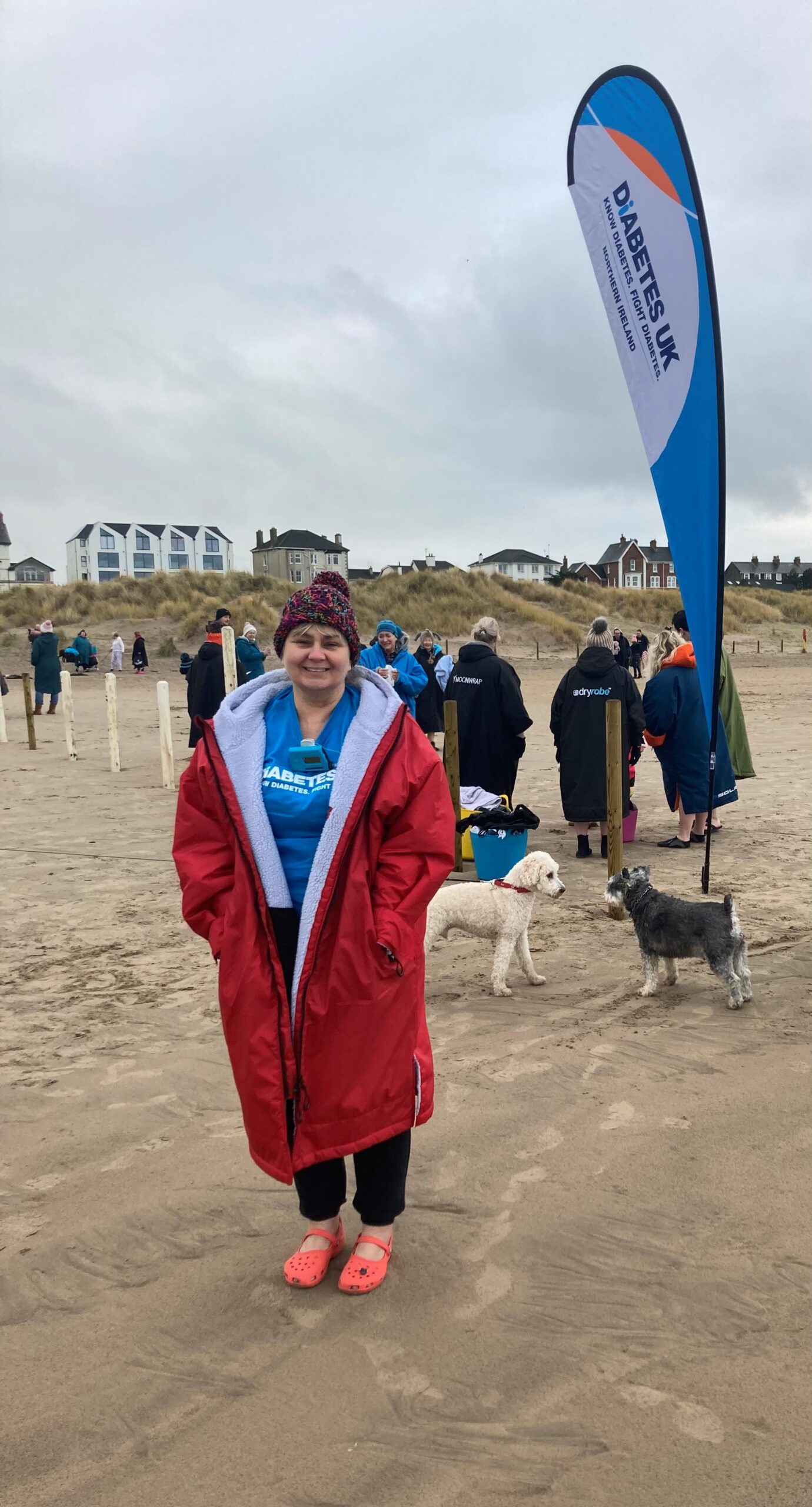Menopause and type 1 diabetes – what you need to know

Menopause can be a trying transition but it may feel especially challenging for those of us living with type 1 diabetes.
The symptoms of menopause are wide ranging (download our symptom tracker here), and there’s now evidence to suggest that dropping levels of sex hormones, including oestrogen, progesterone and testosterone, can have a knock-on effect on other body systems, including how well we respond to insulin.
While the research is in its infancy, it’s important to know that there is support out there for navigating menopause while living with type 1 diabetes. Here, we explain what you need to know.
Menopause and type 1 diabetes
Menopause causes our sex hormones – namely oestrogen, progesterone and testosterone – to fluctuate. In turn, this can have a huge impact on our blood glucose levels, especially if we’re diabetic, causing them to spike and fall (got questions about menopause? Read our guide here).
Plus, research seems to suggest that lower levels of oestrogen increases insulin resistance. For those of us living with type 1 diabetes, we may find that we’re more sensitive to insulin than in the past, and may need to adapt what we’re eating and how much insulin we’re taking.
The actual symptoms of menopause can play havoc with our blood glucose levels, too.
Dropping levels of oestrogen can mean many of us may feel more anxious, or struggle to sleep through the night. This, in turn, can cause our glucose levels to fluctuate.
And, let’s not forget hot flushes and night sweats. These can bear a striking resemblance to hypoglycaemia, yet can occur when our blood glucose levels are within the correct range.
Tips for managing menopause and type 1 diabetes
A continuous glucose monitoring system can help to provide more confidence during this transition as it lets us better understand what our blood glucose levels are doing throughout the day.
Vitamin D can prove incredibly beneficial at this time of life, too. Taking a daily supplement can help to support levels and, in turn, improve bone health and provide additional protection again osteoporosis.
We can also take a closer look at our diet – prioritising protein and healthy fats over carbs and processed foods, and limiting alcohol. We might notice too that the amount of insulin needed to cover carbs eaten changes during menopause.
Another option is HRT. This tops up levels of oestrogen, progesterone and, in some cases, testosterone. In doing so, HRT can improve and often eradicate menopause symptoms such as hot flushes, night sweats, reduced libido, joint pains, mood swings, vaginal dryness and urinary incontinence.
Having diabetes doesn’t mean that we can’t take HRT and it might actually help to improve insulin sensitivity. Providing the benefits outweigh the risks, HRT can form an important part of treatment. Chatting with a GP to talk through our options can be really beneficial.
“I was told I wouldn’t live long enough to experience menopause”
Dawn Adams, a trained midwife from Northern Ireland who lives with Type 1 Diabetes and menopause, shares her story.
 “I was diagnosed with type 1 diabetes in 1993 – I was 23 years old and in my final year at uni training to be a primary school teacher. My weight had dropped from seven stone to five stone in just eight weeks. I was constantly thirsty, even though I was drinking 8-10 litres of fluid each day. My hands also became very cracked and bleeding and my breath smelt of acetone.
“I was diagnosed with type 1 diabetes in 1993 – I was 23 years old and in my final year at uni training to be a primary school teacher. My weight had dropped from seven stone to five stone in just eight weeks. I was constantly thirsty, even though I was drinking 8-10 litres of fluid each day. My hands also became very cracked and bleeding and my breath smelt of acetone.
“I was in hospital for around a week. My outlook was difficult to hear as a young woman in her 20s. The consultant advised me that I probably wouldn’t live past my 40s (so offered no advice for menopause), and that, if I chose to have children, they probably wouldn’t live past a year.
“Fortunately, all of my children were born very happy and healthy and after my fourth son was born, I decided to retrain as a midwife.
“It was during this time that I started to notice just how much my menstrual cycle was affecting my blood glucose levels. I seemed far more insulin sensitive during the follicular phase. There wasn’t much research on this at the time, but through wearing Abbott’s continuous glucose monitor, FreeStyle Libre 2, I could keep track of it much more easily. Friends with diabetes said they’d noticed similar things too. It made me aware just how other hormones could be impacting my diabetes.
“Then, of course, menopause arrived.
Understanding the symptoms
“Some of the symptoms of menopause were very difficult to untangle from diabetes. Hot flushes and hypoglycaemia can feel very similar.
“Prior to menopause, night sweats would mean low blood glucose and I’d usually have a carton of apple juice to help. However, the hot flushes were happening when my blood glucose levels were in the correct range – apple juice definitely wouldn’t have helped!
“When it came to getting HRT, I had a very open-minded GP. Even though there had been little research into HRT for women with diabetes, we had an open conversation and the benefits for me seemed to outweigh the harms. I was really keen to give it a try and I was put on transdermal HRT.
“Within 72 hours, my hot flushes eased and I noticed that my blood sugar levels seemed more stable.
“The data is still so limited for those of us going through menopause with type 1 diabetes. But, I was involved in a population study looking into the effects of HRT. The results suggested that those using HRT were better able to stabilise their blood sugar.
“Going forwards, I’m really looking forward to including more and more women in the data. It’s amazing to see the conversation around menopause opening up in mainstream media – we just need to make sure everyone is included.”




